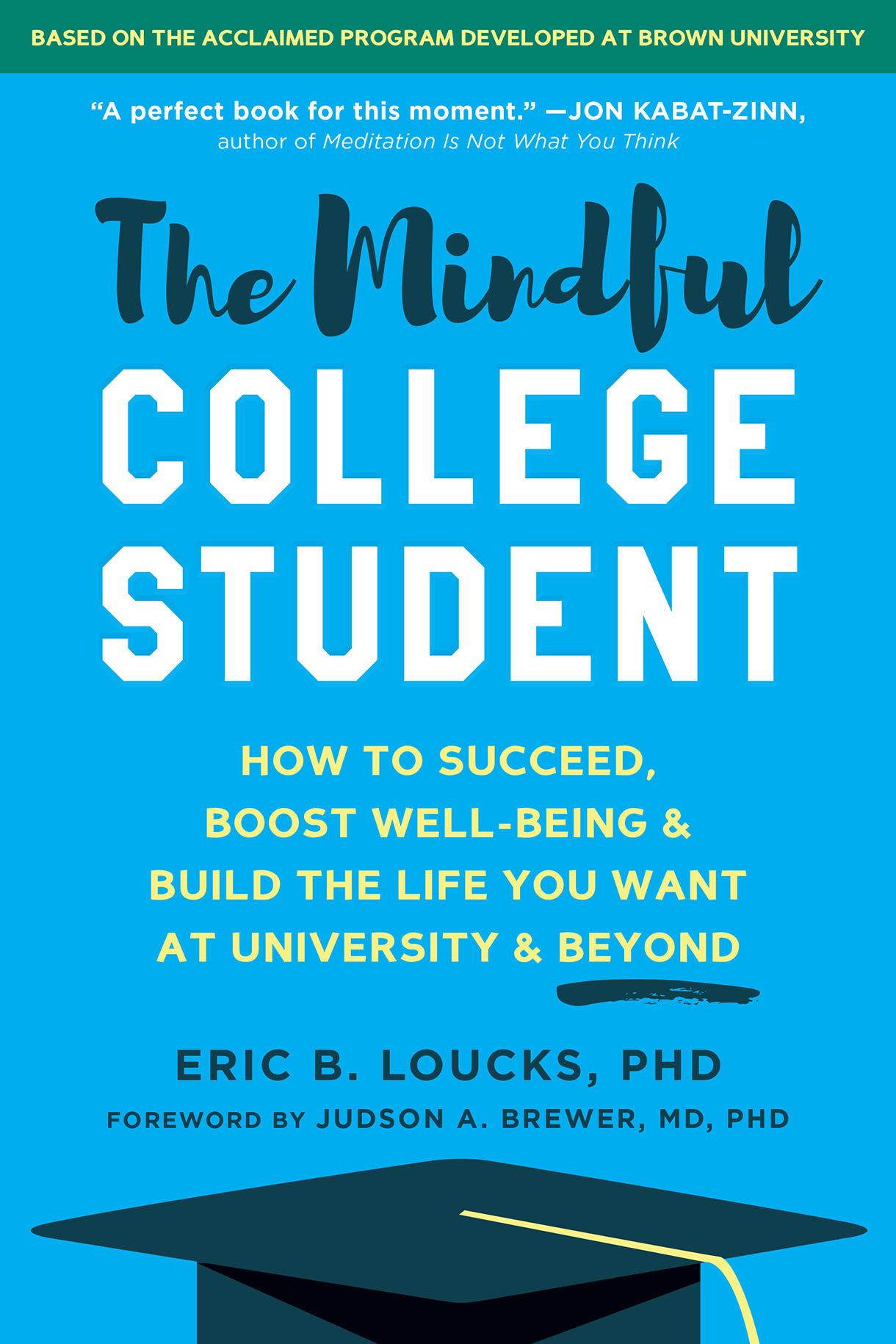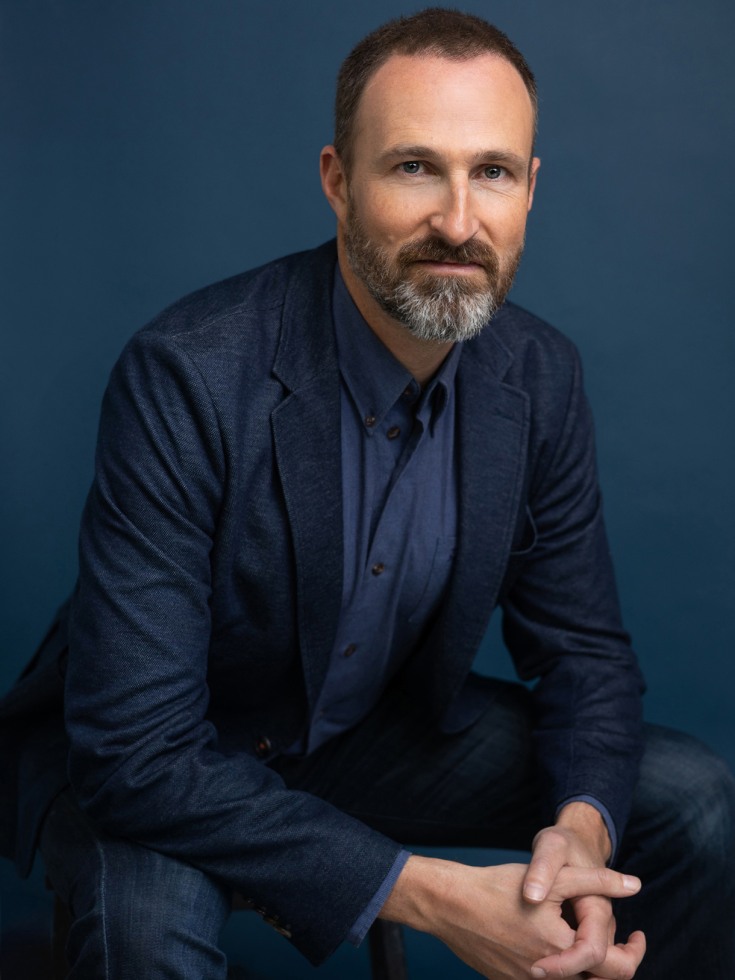PROVIDENCE, R.I. [Brown University] — It’s a tough time to be a young adult, most young adults themselves say, as do those who teach and work with them.
Eric Loucks, an associate professor and director of the Mindfulness Center at Brown University, interacts with young adults while teaching as part of the Brown’s master of public health mindfulness concentration. He says that young people talk frequently about economic stress, career uncertainty, fraught relationships with social media, and loneliness, among other concerns.
But Loucks suggests that mindfulness may be an effective way to help to them (and people of all ages) contend with challenges and learn habits that can set them up for a lifetime of better health. In a new book, “The Mindful College Student: How to Succeed, Boost Well-Being, and Build the Life You Want at University & Beyond,” he provides information on mindfulness training supported by clinical research to help young adults develop skills to bolster well-being.
The book is based on Loucks’ Mindfulness-Based College program at Brown. Launched in 2015, the noncredit program grew out of a for-credit mindfulness course at Brown, and a study showed that its approach improved health outcomes among participating students. Loucks said he was encouraged to see that a tailored mindfulness program could help students decrease stress and symptoms of depression and increase sleep quality, physical activity levels and general wellness.
“One of the reasons I'm a professor is that I really enjoy working with young adults,” Loucks said. “But an in-person program that lasts for two and half hours a week for eight weeks isn’t available to that many people. The book is a way to make mindfulness training vastly more accessible to young adults — and basically serve as a way to support the next generation.”
“The Mindful College Student,” published by New Harbinger Publications, was published on April 1. Here, Loucks answered questions about the power of mindfulness.

Q: What are some of the most pressing challenges faced by today’s young adults?
Hundreds of young adults have gone through my mindfulness training program at Brown, and in the process of writing the book I interviewed a couple dozen of them. One of the things that comes up most frequently is economic stress. Tuition and housing prices have been outpacing inflation for many years, and there’s less job security than there used to be. Recently, the pandemic has made it more difficult to network or explore new opportunities.
Another thing students brought up was their relationship with digital media — they use it in many ways, such as to stay connected to friends and family, but they recognize its addictive properties. Young adults shared that social media sometimes exacerbated mental health issues, including around body image and eating disorders. Then there is loneliness — that’s something young adults don't always talk about until it finally hits crisis levels. Many young adults have recently left their family, they don’t have a long-term romantic partner, and recently, because of COVID-related restrictions over mass gatherings, they haven’t been able to see other people as much. Research shows that young adulthood is the second loneliest time in life, after old age.
Beyond the students I’ve talked to, we’ve seen increases in anxiety and depression in this age group over time. One of the saddest things to me is that mortality rates in the United States have actually gone up for young adults in the last 20 years despite the decreases in mortality for other demographic groups. A lot of that has to do with suicide, drug overdoses and conditions related to deaths of despair.
Q: What definition of mindfulness do you use in this book?
One of most common definitions is paying attention on purpose, in the present moment, non-judgmentally. It has two elements to it: one is present moment awareness, including awareness of our thoughts, emotions and physical sensations. The other piece is the quality of that awareness — for example, it's non-judgmental and has curiosity, friendliness, gentleness or the acceptance of “this is just how things are in this moment.” When we think about experience in this way, then we become like objective scientists, seeing what data is coming in through our senses and being there with it and seeing how to skillfully respond to it.
Q: How can mindfulness help college students with mental health challenges they’re facing?
Let’s start with this: In translations, the word for mindfulness (sati) shares the same root as the Pāli word for arrow (sara). Like an arrow, mindfulness is seen as being fast, in that it brings to mind our wisdom in the moment. So we’re remembering to bring our wisdom — from our parents, from books, from the wise people around us — to the present moment.
As an example that might be relevant to young adults: If we’re having stress around the high costs of living in an expensive city, can we bring awareness to our thoughts, emotions and physical sensations around the economic stress and see what arises? Is what arises perhaps the notion to look for opportunities in other regions of the country that are less expensive, as many young people have been doing? Then, in considering other places to live that are less expensive but still promising, maybe the stress we’ve been feeling starts to comes down. Or maybe wisdom in that moment is using stress as the wind in our sails, and learning how to use the wind to change direction. Maybe we harness the stress to find ways to live creatively: applying for a job that has a higher paying salary that’s aligned with our values, motivating ourselves to find a creative idea that leads to revenue, or some other way to afford to live in the expensive city that we enjoy. So you can see how mindfulness can be harnessed depending on what is arising in our environment.
Q: How does mindfulness work to reduce stress?
There are a few important mechanisms: Self-awareness, attention control and emotion regulation. Mindfulness meditation can help with all three. In self-awareness, for example, we learn to be aware if eating or drinking or smoking something is making us agitated, including before, during and after. In attention control, we place our attention somewhere that helps us really experience the full arch of experience related to eating or drinking or smoking that thing, and then directing our attention to acting on skillful next steps such as engaging in a more rewarding activity that makes us feel better overall. And then sometimes the mindfulness training helps us detect stressors earlier on, before it gets out of control, and then act on bringing our wisdom to this moment to respond skillfully.
Q: How did you come up with the plan that’s described in the book?
The program is grounded in mindfulness-based stress reduction (MBSR), which was developed by scientist and mindfulness teacher, Dr. Jon Kabat-Zinn over 40 years ago and is one of the most well-researched evidence-based mindfulness programs available. We do research on MBSR at Brown, and have a certificate program in MBSR teaching offered through the School of Professional Studies. I took the practice of MBSR and adapted it for young adults, based their feedback. I also added some emphasis on physical health. We ran that through a clinical trial, and then tried to bring forward some of the key concepts that were shown from the clinical trial to be helpful and useful for participants. In the future, we intend to do another clinical trial specifically measuring how helpful the book format of the program can be in helping address some of these issues.
